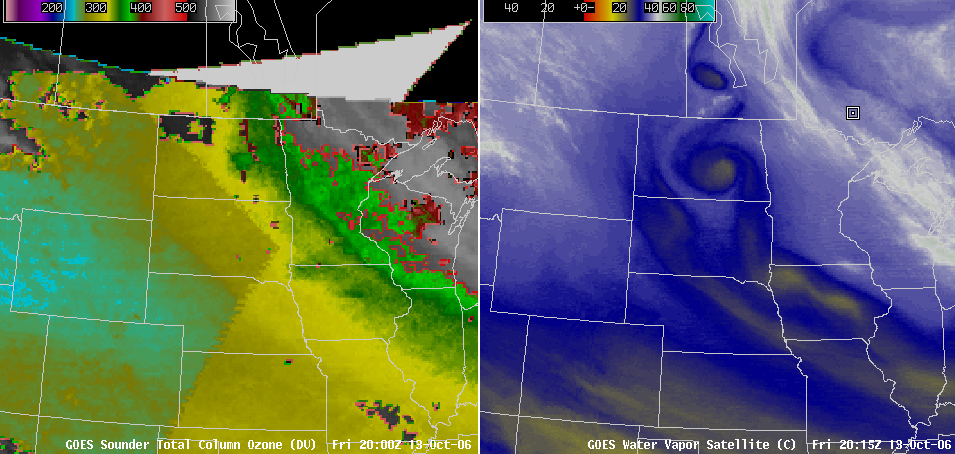Stratospheric intrusion vorticies
GOES-12 6.5 µm water vapor channel imagery (QuickTime animation, above) revealed a series of vortices migrating southward along the western periphery of the large cold-core polar vortex that was centered over southern Ontario on 13 September. Instability-like fragmentation of a potential vorticity (PV) strip along a stratospheric intrusion can lead to the development of this type of isolated subvortex structure (see Wirth et al, 1997). Within these mesoscale vortices, the tropopause was likely displaced downward several kilometers as vertical winds induced by local stratospheric intrusions brought drier air into the upper troposphere. AWIPS imagery of GOES sounder total column ozone (QuickTime animation, below) showed elevated ozone values (350-375 Dobson Units, green enhancement) co-located with the dry vortex signatures — elevated ozone is another signature of stratospheric air. Note that these vortices were forming in cloud-free air (GOES-12 4 panel image).


